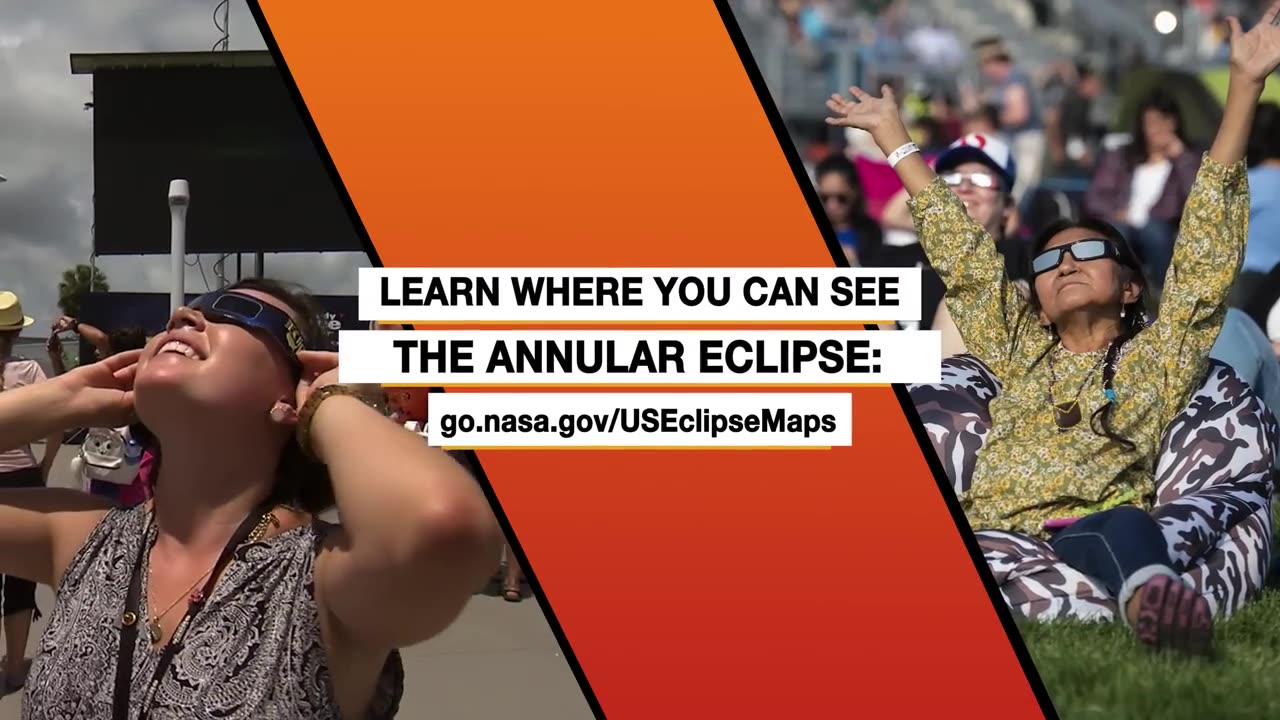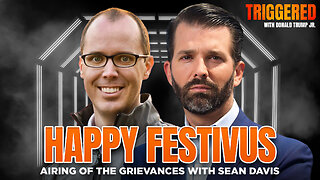Premium Only Content

Watch the Ring of Fire Solar Eclipse NASA Broadcast Trailer
A "Ring of Fire" solar eclipse, also known as an annular eclipse, occurs when the Moon covers most of the Sun's center, leaving a fiery ring-like appearance around the edges of the Moon. Here's a general description of what such a NASA broadcast trailer might include:
Introduction: The trailer typically starts with a brief introduction, mentioning the date and location of the upcoming "Ring of Fire" solar eclipse. It may also highlight the significance of the event and why it's important for scientific observation.
Spectacular Footage: The trailer may feature stunning visuals of the eclipse itself. Expect to see captivating images or animations illustrating how the Moon passes in front of the Sun, creating the characteristic "ring of fire" effect.
Scientific Explanation: There will likely be a segment explaining the science behind a solar eclipse, including how and why it occurs. This could include insights into the mechanics of the Earth-Moon-Sun system.
Safety Information: Safety is paramount when observing a solar eclipse. The trailer might include a section on safe viewing practices, such as using eclipse glasses or other approved viewing methods.
Expert Commentary: Expect to hear from NASA scientists or astronomers who will provide expert commentary on the eclipse. They may discuss the significance of the event for scientific research and space exploration.
Broadcast Details: The trailer will likely provide information on where and how you can watch the NASA broadcast of the eclipse. This could include details about the NASA website, YouTube channel, or other platforms where the live stream will be available.
Encouragement to Tune In: The trailer will conclude with an invitation for viewers to tune in and experience the "Ring of Fire" solar eclipse broadcast, encouraging people to witness this remarkable celestial event.
Remember that for safe viewing of a solar eclipse, it's essential to use proper eye protection or watch through approved methods to prevent damage to your eyes. NASA and other reputable space agencies typically emphasize safety in their eclipse broadcasts and educational materials.
-
 1:01:17
1:01:17
The StoneZONE with Roger Stone
9 hours agoChristmas Edition: Why the Panama Canal is Part of the America First Agenda | The StoneZONE
69K23 -
 LIVE
LIVE
LFA TV
19 hours agoLFA TV CHRISTMAS EVE REPLAY
1,613 watching -
 4:33:48
4:33:48
tacetmort3m
1 day ago🔴 LIVE - THE ZONE KEEPS PULLING ME BACK - STALKER 2 - PART 15
51K12 -
 22:45
22:45
Brewzle
16 hours agoI Went Drinking In A Real Bourbon Castle
35K3 -
 48:36
48:36
PMG
1 day ago $2.64 earned"Parkland Parent Speaks Out On Kamala Harris Using Victims"
25.2K3 -
 4:06
4:06
The Lou Holtz Show
15 hours agoCoach Lou Holtz’s Heartfelt Christmas Message 🎄 | Family, Faith & Notre Dame Spirit 💚 #christmas
20.6K -
![ROSEANNE BARR - Her Journey, TRUMP, and the MAGA GOLDEN AGE! [INTERVIEW]](https://1a-1791.com/video/s8/1/M/m/B/2/MmB2v.0kob.1-small-ROSEANNE-BARR-Her-Journey-T.jpg) 51:35
51:35
Dr Steve Turley
1 day ago $19.06 earnedROSEANNE BARR - Her Journey, TRUMP, and the MAGA GOLDEN AGE! [INTERVIEW]
55.5K54 -
 57:38
57:38
The Tom Renz Show
12 hours agoMerry Christmas - The Tom Renz Show Christmas
91K17 -
 2:59:10
2:59:10
Wendy Bell Radio
23 hours agoThe Bridge Too Far
170K301 -
 1:03:45
1:03:45
Donald Trump Jr.
1 day agoHappy Festivus: Airing Our Grievances and Stopping The Swamp w/Sean Davis | TRIGGERED Ep.201
428K546